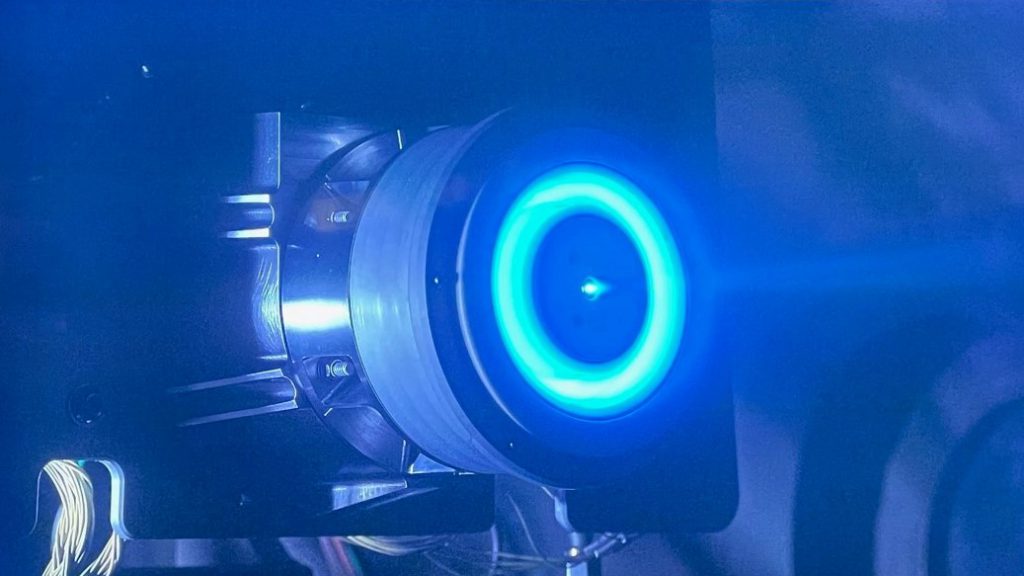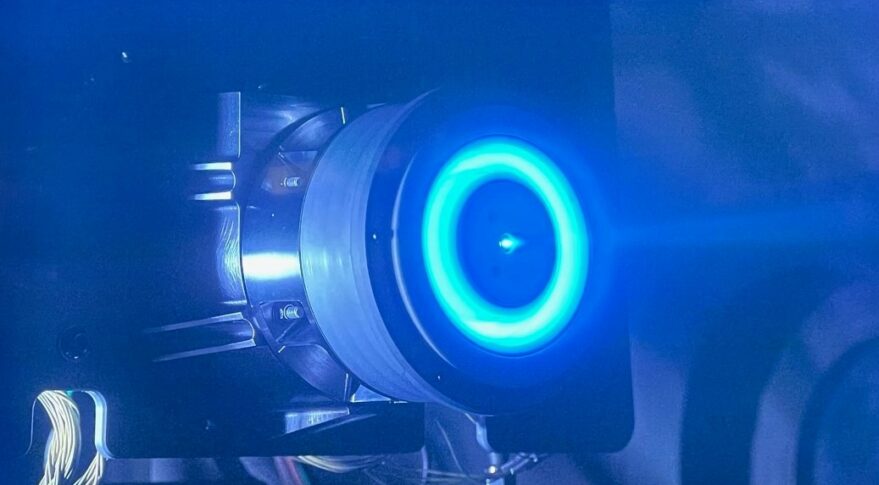
Northrop Grumman says customers are ‘lined up’ for on-orbit satellite servicing (Image Credit: Space News)

WASHINGTON — SpaceLogistics, a satellite-servicing firm owned by Northrop Grumman, last week successfully fired the electric propulsion system it is developing for the Mission Extension Pods it plans to launch in 2024.
“It’s proceeding well. We achieved first light,” Rob Hauge, president of SpaceLogistics, told reporters March 24 at the Satellite 2022 conference.
The Mission Extension Pods, or MEPs, are propulsion jet packs that will be installed on client satellites in orbit by a Mission Robotic Vehicle (MRV) that SpaceLogistics also is developing.
The auxiliary propulsion devices were designed to extend the service life of satellites in geostationary orbit by up to six years. Australian satellite operator Optus will be the first customer for the MEP.
“We’ve got a whole bunch of companies that are lined up ready to use it, which tells us that the market is there,” Hauge said.
SpaceLogistics is developing the electric propulsion for the MEPs in-house so a successful first firing was a significant step, he said. There was no off-the-shelf propulsion system on the market that fit the size requirement so Northrop Grumman is developing its own. The hall thruster engine is being tested at NASA’s Glenn Research Center.
The plan is to launch the 3,000 kilogram MRV and three MEPs each about 400 kilograms on a SpaceX rocket in 2024. They will be released from the launch vehicle, independently deploy and raise themselves to a geostationary orbit.
Once in orbit each MEP will be captured by the MRV and transported to the client satellite. After delivering the MEP to the client vehicle, the MRV detaches itself and moves on to grab another MEP for the next customer.
The MRV is designed to stay in orbit for 10 years. Hauge said there are five still undisclosed customers that already have signed up for the service.
Hauge said the MEP was conceived as a more efficient and lower cost servicing option than the Mission Extension Vehicles that SpaceLogistics first launched in 2019.
Two MEVs are in orbit docked with two Intelsat geostationary satellites that were running low on fuel.
Hauge said there are no plans to build any more MEVs. The two existing vehicles will stay in orbit for about 15 years. SpaceLogistics expects most satellite operators will prefer the MRV and the propulsion pods because it’s less expensive.
The MEP is a different business model. The propulsion pack is delivered on orbit, he explained. “We use our MRV to dock it to the satellite, we train the operators, we give them the software and they fly that satellite.”
The MEV is the size of a minivan, stays docked to the client and essentially flies the other satellite, said Hauge. The company does not disclose pricing but Hauge said an MEV lease can run as much as one-quarter to one-half of the cost of a geostationary satellite. “With Intelsat, they operate their payload and we are flying their satellite.”
Intelsat has five-year contracts and has the option to extend it. If it doesn’t, there are several telecommunications satellite companies that want to use it, said Hauge.
The MEP is far less costly than the MEV, he said. “It was designed to meet all the needs for station keeping at a price point that makes it worthwhile for a satellite provider.” For most customers that are earning revenues from their satellites, adding six years of service life is a no brainer, he said.
Hauge said he’s briefed the capabilities of the MEP to officials at the U.S. Space Force’s Space Systems Command and the company hopes to generate government interest in using the system to extend the life of military satellites.








